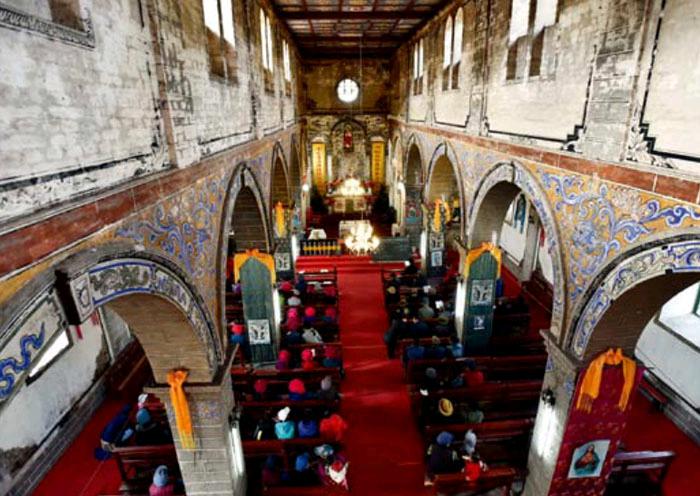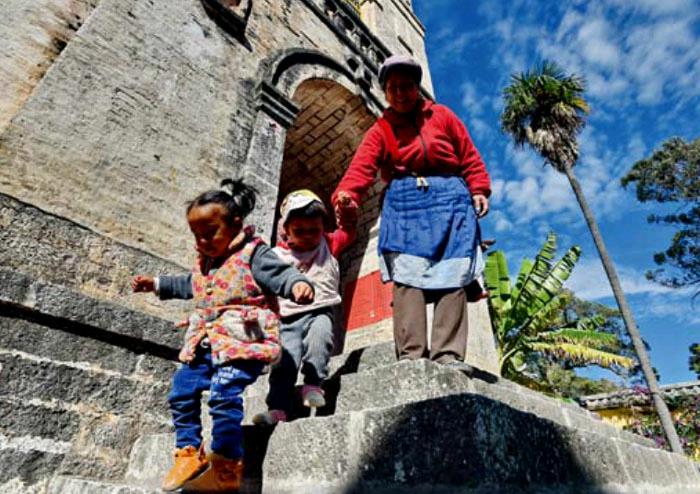Cizhong:Inheriting Classical French Winemaking
2017-04-25byZhouJin
by+Zhou+Jin
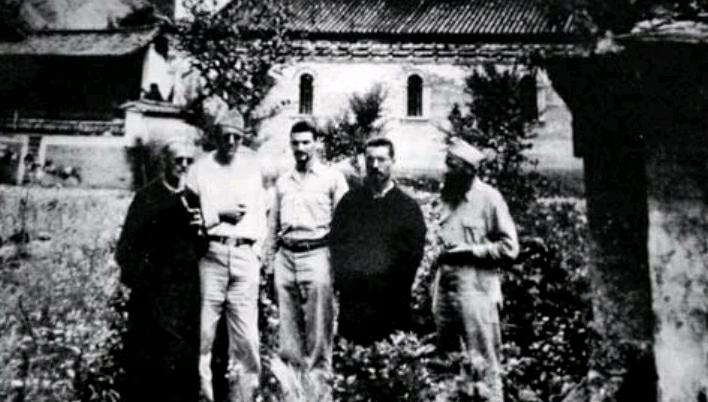
The Lancang River, known as the Mekong River in Southeast Asia, flows through the Meili Canyon in southwestern Chinas Yunnan Province, next to which is Cizhong Village in Deqin County, Yunnan Province. With an average altitude of 1,800 meters, this village, hidden in the mountains, is home to an abundance of ethnic groups. Some 100 years ago, many European missionaries and foreign explorers were already making the tough trip to reach the village. Today, many still deem it a peaceful utopia tucked away from the outside world.
My impression of Cizhong started with a glass of wine. In the home of a Tibetan local I called “Uncle Adro,” I was served delicious homemade wine. Uncle Adro has a 0.27-hectare vineyard where he grows“rose honey,” an ancient French grape variety suitable for both winemaking and eating. The grape was introduced to Yunnan Province by French missionaries in the early 19th Century.
Both Uncle Adro and his son are Catholic. He named his son Zhang Awei, a transliteration of the baptismal name “David.” Uncle Adros daughter-in-law, however, is a believer of Tibetan Buddhism.“Such an arrangement is quite common in Cizhong,” laughs Adro. “Many families have members with different religious beliefs living together under the same roof.”Local villagers consider religious beliefs a personal choice and never interfere with the practices of others. When the villages Catholics host weddings and funerals featuring Catholic rituals, Tibetan Buddhists join them and offer help, and vice versa. The philosophy of Cizhong is that all things are interrelated and should develop and prosper together.
Wine is a necessity for standard Catholic rituals. Its history in Cizhong is closely tied to the popularization and development of Catholicism in the region. Statistics show that at present, about two thirds of Cizhong locals consider themselves Catholic, and the remaining one third is mostly Tibetan Buddhist.
The century-old Cizhong Catholic Church is an important window to local history. Locals say that the vineyard next to the church produces a time-honored species of grape from Frances Bordeaux region. Today, the grape variety is extinct in its home country, but continues to grow and flourish in remote southwestern China.
At the highest point of the churchs main structure is a massive cross. However, it combines Western architectural elements such as a bell tower, cross, and arched chapel with Chinese elements including a pavilion, gate tower with upturned eaves and flying rafters. Considering such tasteful fusion in its architecture, it is no wonder that Catholicism and Tibetan Buddhism have peacefully coexisted for so long in the area.
I had the pleasure of meeting Xiao Jieyi, an 88-year-old “walking dictionary” who volunteers at the Cizhong Catholic Church. The man speaks fluent Mandarin, Tibetan, French, Latin, and two other Chinese ethnic languages—Naxi and Lisu. In the book A Concise History of Catholicism in Cizhong, which he compiled in his younger years, Xiao carefully listed the Latin name of every foreign missionary to visit.
Almost every household in the village makes its own wine. I was offered another glass by Austin, bishop of the Cizhong Catholic Church. In 1996, he stayed for a time at the Yanjing Catholic Church in Markam County, Tibet Autonomous Region, to learn winemaking from a senior nun.
Austins wine features traditional French winemaking techniques. Grapes produced in Cizhong are only the size of fingernails and taste a bit sour. Wine made with these grapes tastes rich with lasting flavor. Locals usually make wine for private use or treating guests. Some tourists also buy a few barrels. Since winemaking recipes differ a bit from family to family, the taste of each is slightly different.
How did the foreign missionaries of a century ago manage to plant the roots of Catholicism so deeply in the steep mountains?
Austin hypothesizes that when the French missionaries first arrived in the areas around the Lancang River to preach their religion, they performed many charitable acts such as establishing schools, providing medical services, caring for seniors without family and bringing up orphans. Such selfless acts won them immense trust and a great reputation among the locals.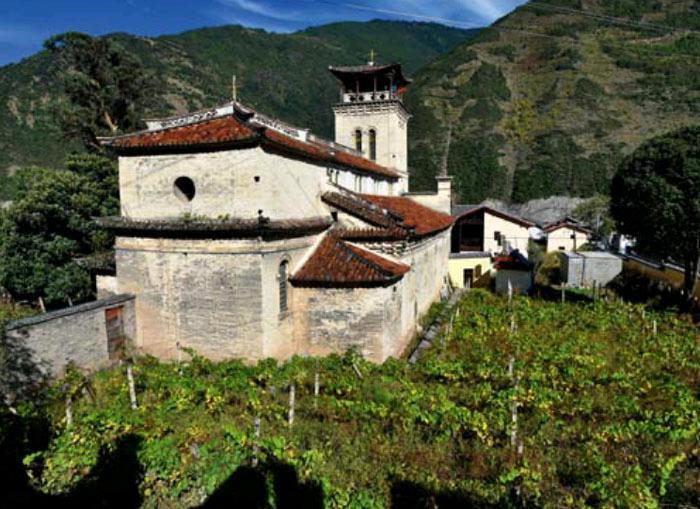
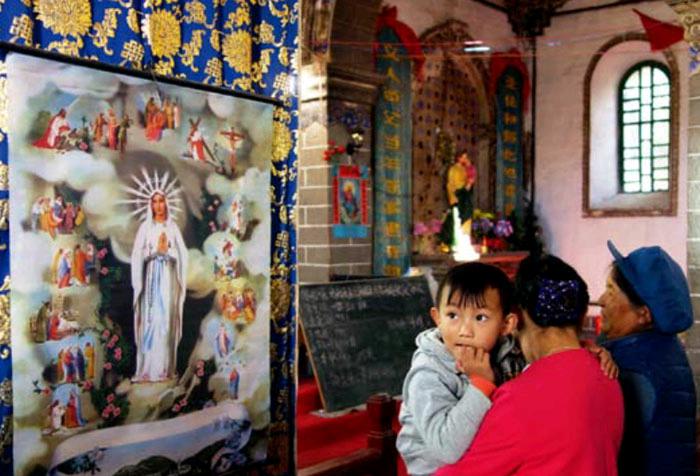
But perhaps more importantly, early missionaries were all knowledgeable and charismatic. Preserved manuscripts in the Deqin County Library, which were written by the missionaries, attest to this. According to Xiao Jieyi, French missionary Francis Gore, who successfully grafted the French grape “rose honey” to a wild local grape in the 1930s, was a highly-educated man. He excelled at the Tibetan language and even translated Catholic classics into Tibetan alongside authoring Tibetan dictionaries. Another French missionary named Georges André was an outstanding engineer. In the 1940s, André oversaw the construction of a route from Cizhong to the Nujiang River. And he designed the Liutongjiang chain bridge to complete a crucial route from Yunnan to Tibet.
The most historic church along the Lancang River, the Cizhong Catholic Church is under provincial and state protection. Mass is held every Sunday in the church. At about 9:00 a.m., Catholics from various ethnic groups including Naxi, Tibetan and Lisu file in. Yao Fei, the current priest, greets them one by one. Yao took office in February 2008 to become the first full-time Chinese priest in the church since the foreign missionaries left in 1951.
At 10:00 a.m., more than 100 Catholics gather to sing hymns in Tibetan. Locals said that at important religious festivals such as Christmas and Easter, Catholics from Cigu and Badong, two nearby villages, also make the trip to the village. Sometimes, more than 1,000 people attend holiday events. Mass in Cizhong is more exciting than solemn. Kids may play around and babies cry in their parentsarms, but when the singing starts, all the noises melt away.